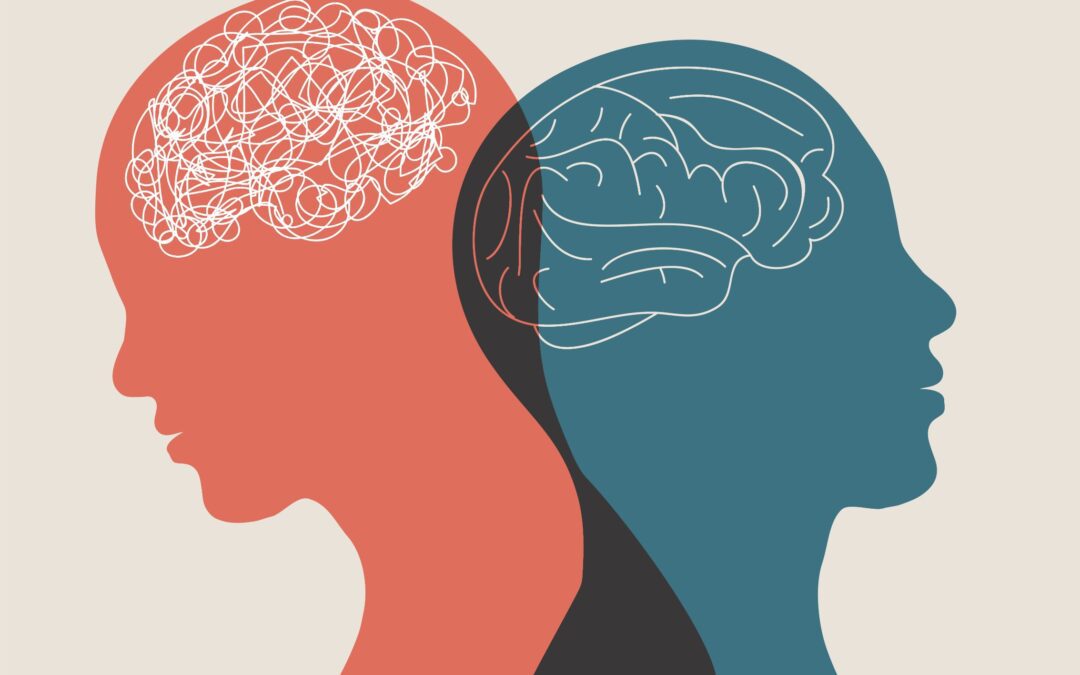Going into a drug rehabilitation facility is one of the scariest and bravest things you can do as a person dealing with substance abuse problems.
One of the most important things to consider is how long it takes to complete a rehab program. The truth is that this varies greatly from person to person.
Most drug rehabilitation programs run from 30 to 90 days, depending on the intensity of the treatment involved, but rehabilitation and recovery from drug addiction last a lifetime. A former addict is always in recovery, no matter how long they have been sober. Additionally, some people need long-term treatment or a halfway house to avoid relapse.
Knowing what to expect from rehab can take most of the uncertainty out of moving forward with a drug rehabilitation program. Keep reading to learn more about how long it takes to go through rehab.
How Long Are Most Rehab Programs?
The length of rehab programs differs from person to person. Three standard program lengths are usually seen in rehabilitation centers:
- 30-day programs
- 60-day programs
- 90-day programs
- Sober living/extended aftercare programs
The amount of time a person spends in rehabilitation depends on a variety of factors, such as:
- The intensity of their addiction: People who have been abusing drugs and alcohol for a long time may require more intensive treatment and rehabilitation to avoid relapse compared to someone who has a relatively mild addiction.
- The substance(s) that they are addicted to: Some substances, such as opioids or alcohol, cause long-lasting and sometimes dangerous withdrawal effects that can be difficult to manage without support from medical staff and counselors. While a person may “dry out” from alcohol within thirty days, the fact that alcohol is readily available means that a longer program may be
warranted to avoid an immediate relapse.
- Legal orders: Some people who enter drug rehabilitation do so under a legal threat of incarceration or other punishment should they leave rehab early, as rehabilitation is often offered to drug addicts as a humane alternative to prison in drug-related criminal charges. A drug court judge typically determines the length of the stay.
- Costs: Medical insurance and workplace programs like the Family and Medical Leave Act (FMLA) can sometimes help cover the costs of entering a rehabilitation program, but many are still expensive in the long-term. How long a person can reasonably stay in rehab depends on how much time they can afford to be in recovery and how much time they can afford to be out of work.
There is no hard and fast rule for how long someone should be in rehab—it all comes down to individual circumstances. But everyone goes through roughly the same process when they show up.
What Are the Stages of Rehab?
The length of a rehab stay is generally broken into several parts:
- Intake: Intake is the very first step in rehab, and it is the most important step an addict can take when it comes to getting their life back on track. Intake is the process of entering rehab and being assessed by medical professionals to determine the severity of your addiction and withdrawal symptoms. Intake is also the stage of the rehab program when you will handle most of your paperwork and other personal information.
- Detox: Detox is often the hardest part of rehab for most addicts since it involves the most debilitating symptoms of withdrawal. Detox from drugs or alcohol is done at a rehab under medical supervision and typically takes around a few days to two weeks to complete. However, drug and alcohol cravings may remain for a lifetime. By the time detox is over, all traces of drugs and alcohol are gone from an individual’s system.
- Rehabilitation: Rehabilitation is the process in rehab where an addict undergoes psychological evaluation and typically enters a combination of individual and group therapies where they try to uncover the causes behind their drug and alcohol abuse. This step of the recovery process is crucial because, without the tools and coping mechanisms learned in rehabilitation, the likelihood of relapse is very high.
- Aftercare/Recovery: Aftercare is the process of continuing recovery once you leave a rehab program. Aftercare often involves a combination of individual therapy and continued group therapy through programs such as Alcoholics or Narcotics Anonymous. The recovery phase of drug and alcohol rehabilitation can (and should) last for a lifetime.
Once you know what to expect when you are going into a rehab program, you will have a better idea of what it will be like once you get there.
Pros and Cons of a 30-Day Program
30-day programs are a common program length for rehabs because it allows for enough time for a person to establish an aftercare program, completely detox, and do some rehabilitation work. It permits them to return to their normal lives as quickly as possible.
Since many drug and alcohol addicts are dealing with addiction while also holding down full-time jobs or raising families, it is important to get the bulk of rehabilitation done as quickly as possible so that people can re-enter a normal lifestyle without losing employment or suffering emotionally from family separation.
Here are some of the pros and cons of pursuing a 30-day rehabilitation program:
| Pros | Cons |
| Rehab is over as quickly as possible | Greater chance of relapse |
| Least expensive option | Less time for intensive psychological counseling |
| Allows for complete detox | |
| Allows for a fast transition into aftercare |
Pros and Cons of a 60-Day Program
60-day programs are also a popular option for rehab length, and the doubled amount of time in rehabilitation from a 30-day program can sometimes make all the difference with more persistent cases of drug and alcohol addiction. 60-day programs typically offer the same types of rehabilitation resources that are offered during a 30-day program, just for a more extensive period.
The major difference between a 30-day program and a 60-day program is the amount of time a person gets to spend in intensive recovery while they are sober. In shorter programs, much of the 30 days is taken up by the painful symptoms of withdrawal and the raw emotional wounds of having to be into a drug rehabilitation program. So, it does not leave as much time for healing.
In a 60-day program, the addict has several additional weeks to participate in intensive therapy and discover their triggers for substance abuse so that they can avoid them more easily when they do leave.
Here are some of the pros and cons of a 60-day program:
| Pros | Cons |
| More time for rehabilitation and therapy | More expensive than shorter detox programs |
| Less chance of relapse | More time away from family and employment |
| Better handling of complicated withdrawal symptoms | Expensive and not covered by medical insurance |
| Stronger support network |
Pros and Cons of a 90-Day Program
A 90-day or three-month program is one of the more intensive rehabilitation programs available, and these longer programs are most often reserved for people who have had difficulty maintaining sobriety in the past or may have committed crimes related to drug and alcohol abuse. This is not just because of how time-intensive it can be, but also how costly. 90-Day programs also usually extend beyond what FMLA and other coverage programs will cover.
90-day programs may seem intense, but they are intense for a reason. And they also have a much higher rate of success than shorter programs, where the chance of relapse is higher.
Here are some of the pros and cons of a 90-day program:
| Pros | Cons |
| More successful in keeping addicts clean | Very expensive and not covered by medical insurance |
| Good for people who have previously relapsed | Difficult to maintain employment |
| Good for people with medical complications | Increased emotional stress from family separation |
| Helps cut addicts off from drug contacts |
The length of the rehab program you enter is an individual choice, driven by many different factors such as employment, finances, and the severity of the addiction.
Making the Decision to Enter Long-term Treatment
Sometimes when shorter terms of rehabilitation are not effective, it is deemed necessary to seek long-term treatment. This is usually done as a last-ditch effort to help an individual to maintain sobriety and sometimes includes a major geographical relocation.
This is done for several reasons:
- To remove the addict from any triggers that are causing them to repeatedly relapse
- To remove the addict from all contacts that they can source drugs and alcohol from
- To place the addict in a completely sober living environment for an extended period, so they have a chance to get used to living life without drugs and alcohol being presented to them
Long-term treatment programs often involve halfway houses or sober living, where residents take up new living quarters for three months up to a few years. Some residents of halfway houses and sober living facilities end up joining the staff or relocating permanently, which makes this an extreme form of rehabilitation.
If an individual has tried other rehab programs that have failed, it might be time to consider a longer-term of treatment. The major caveat is that sober living and halfway houses do have a monthly fee, but the advantage of sober living is that it often acts as a support network to achieve a new source of employment for paying that residency off.
Long-term treatment is often a better choice for drug addicts and alcoholics who are so deep in their illness that they cannot maintain a job while they are not sober.
What is the Recommended Length of a Rehab Stay?
While the recommended lengths of rehab stays vary, the general rule of thumb set forth by the National Institute on Drug Abuse (NIDA) is that 90 days is the most beneficial amount of time for a rehab program. While few people can afford a stay at rehab that long, shorter rehab stays have been linked with a higher incidence of relapse and are not considered as effective as longer spans of treatment.
Luckily for those who cannot afford a 90-day program, a shorter program combined with intensive outpatient therapy can also be effective in rehabilitating addicts, provided they work the program. The biggest challenge for counselors in drug and alcohol recovery centers is the high treatment dropout rate. Since almost all addicts are in rehab voluntarily, they can leave at any time. Others may pose disciplinary programs and be kicked out early.
90-day programs are the length of stay favored by the NIDA, but that is only covering inpatient treatment. Outpatient therapy should ideally last for years after a person has left rehab to help prevent them from falling back into old destructive habits and to help the recovering addict continue to build new coping mechanisms that do not involve abusing drugs and alcohol.
Many rehabilitation programs require extensive outpatient treatment, such as methadone clinics. It is strongly recommended that heroin addicts and other opioid addicts continue to receive drugs such as methadone and suboxone for at least twelve months after they quit using to ensure that the physical cravings for the drug remain at bay.
What Happens When You Get out of Rehab?
No matter how long you end up staying in a rehab center, it is very easy to be afraid of leaving rehab once you’ve completed your course of treatment. Often through the process of therapy, old wounds that trigger drug abuse have been completely unearthed and examined, leaving the individual feeling raw and vulnerable.
It is important that before you leave a stay at a drug rehab that you have a strong support network in place. Support networks include the following:
- Friends and family willing to support you through the recovery process
- A local AA or NA meeting that you can attend regularly
- A referral to a local therapist or psychiatrist to monitor your progress post-rehab
- A drug and alcohol recovery sponsor or mentor
Putting this kind of support network in place before you ever step foot outside of a rehab center can help give you the best possible chance of a full recovery from addiction.
How to Support Someone After They Return from Rehab
Many people think that rehab ends when the inpatient program ends, but the truth is that the real work begins with the recovering addict walks out of an inpatient program.
It is easy to maintain sobriety within the environmental parameters of a rehabilitation center, but once exposed to the triggers and temptations of the world, many addicts backslide and eventually relapse. Experts estimate that regardless of their length of stay, 40-60% of all addicts relapse at least once after they leave inpatient treatment.
Here are some ways that friends, family, and other members of an addict’s support network can help to support them after their stay in rehab:
- Do not be afraid to call out suspicious behavior. A newly recovered drug addict may get defensive or angry about being monitored, but they have to remember that the trust that has been broken that must be repaired over time. If you suspect that a recovering drug addict has relapsed or is hiding renewed usage, it needs to be addressed as soon as possible before the problem escalates.
- Do not judge or blame the addict for past behavior. Many former addicts have done terrible things to friends, family, and others that they are not proud of. The fact that a person has completed a drug abuse recovery program in a rehabilitation center means that at least part of them wants to get clean and stay clean. Dredging up the past or acting judgmental can only serve to stir up negative emotions in the recovering addict that can trigger them to use.
- Offer to accompany them to an Alcoholics Anonymous or Narcotics Anonymous meeting. Getting to know other addicts can help those who are not afflicted see what a pervasive problem this disease can be and how they are not alone in their struggles to control it.
The friends and family of addicts are not responsible for managing the addict’s recovery—only an addict can determine when they truly want to get clean. But a strong support network can mean the difference between an addiction recovery that sticks and one that fails.
Rehab Takes Months, But Recovery is a Lifetime
The length of someone’s inpatient stay in a drug and alcohol program usually only lasts a few months, though it may feel like years to the person in the program. However, the process of recovery following rehab is a process that must be maintained for years after the person has taken their last drug or drink.
Treatment is Within Reach at Steps Recovery Center
The longer a person stays in treatment (either inpatient or outpatient), the better chance they have of maintaining their sobriety. While 90-day rehab programs cost a bit more, they are the best option for addicts who are serious about staying clean. At Steps Recovery Center, we work with people from all walks of life, and our goal is to make rehab affordable. Please reach out to us to find out how we can work with your insurance coverage. We have treatment centers in Salt Lake and Utah counties in Utah.




